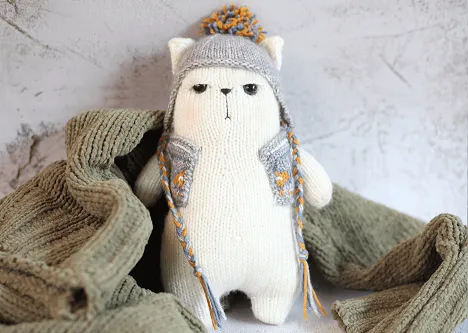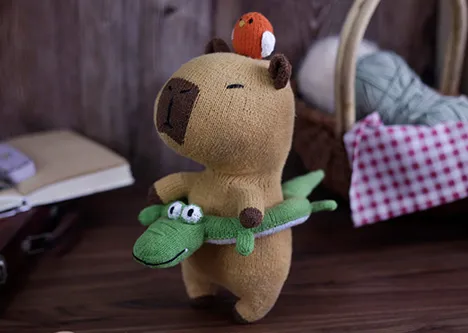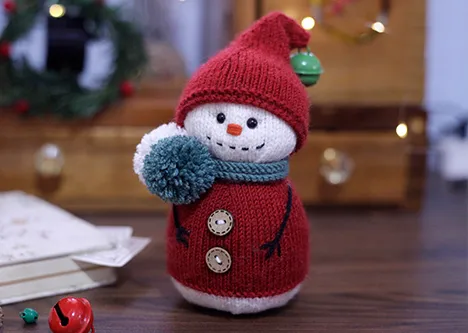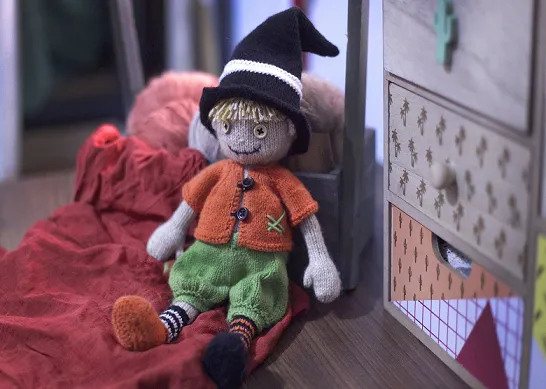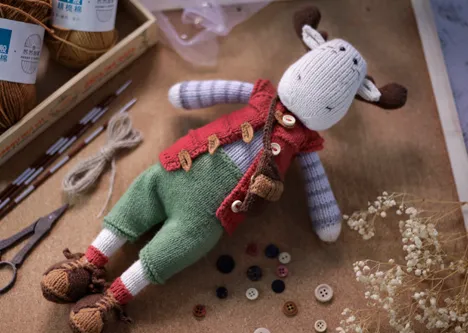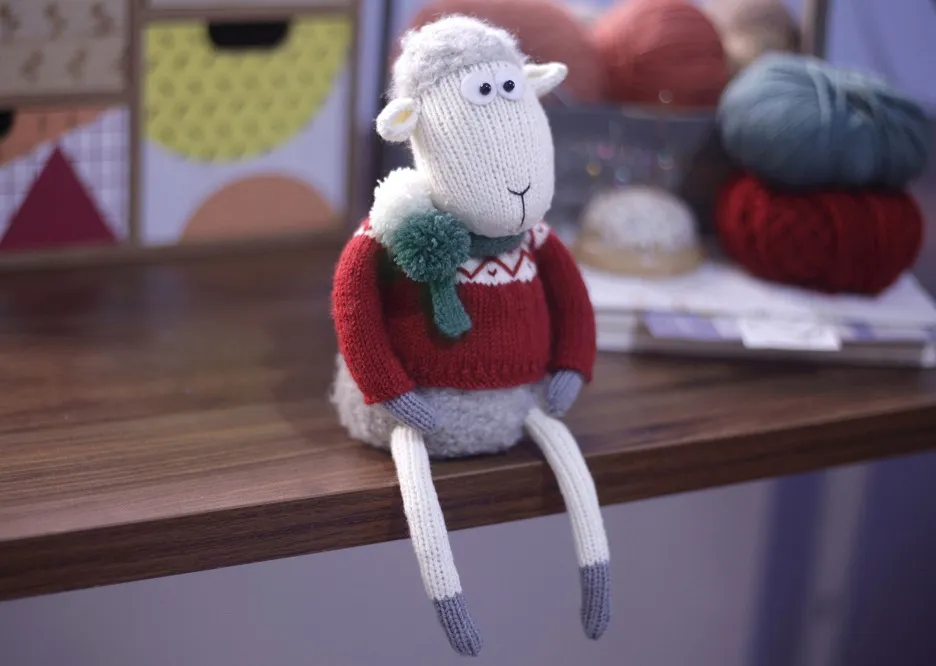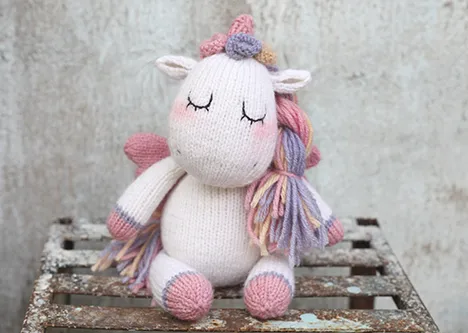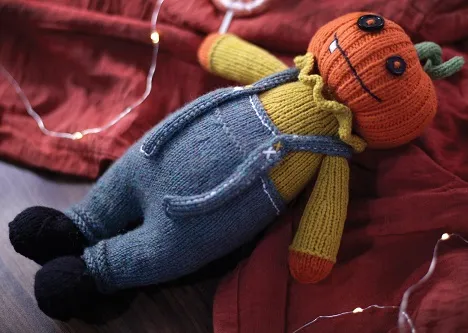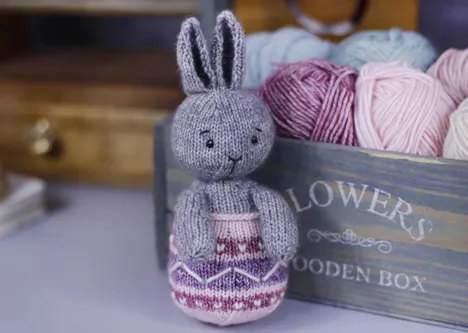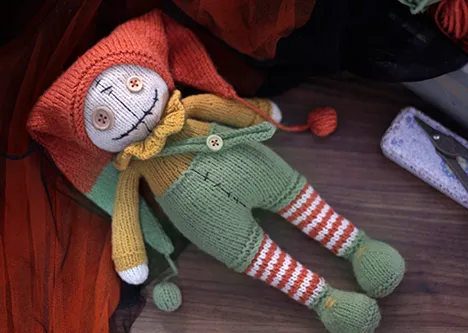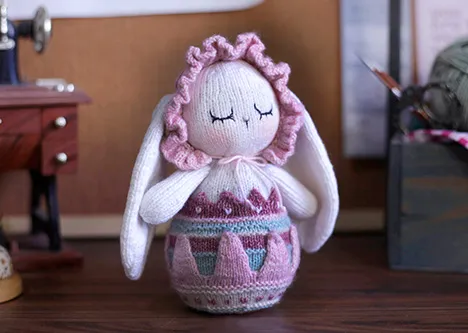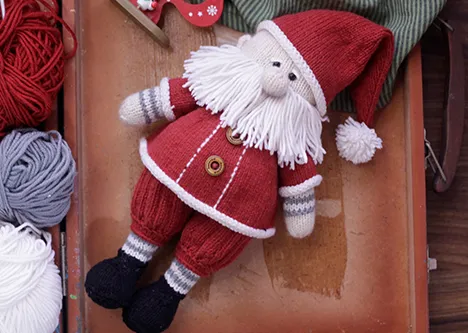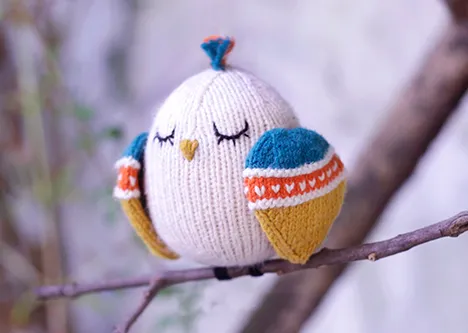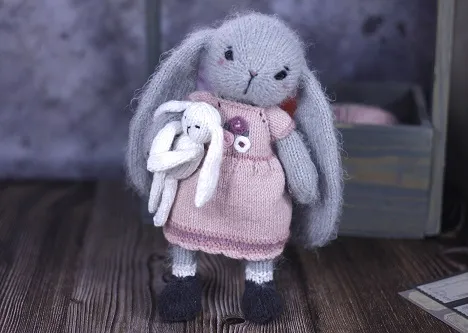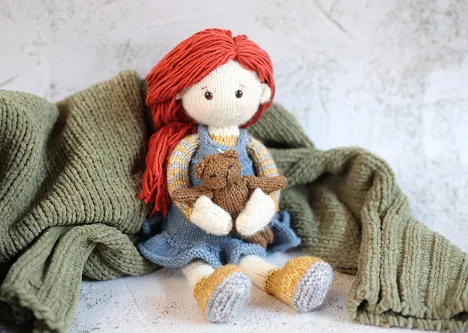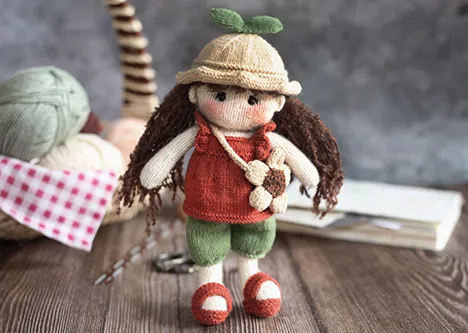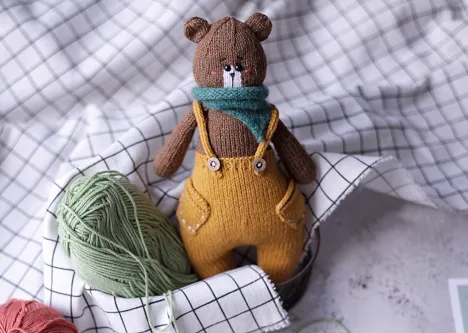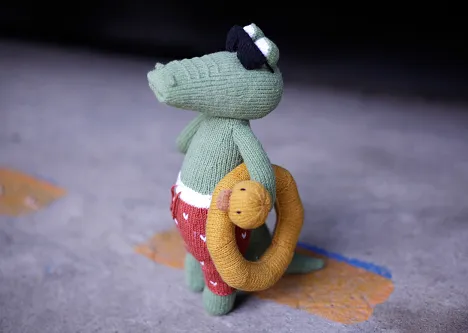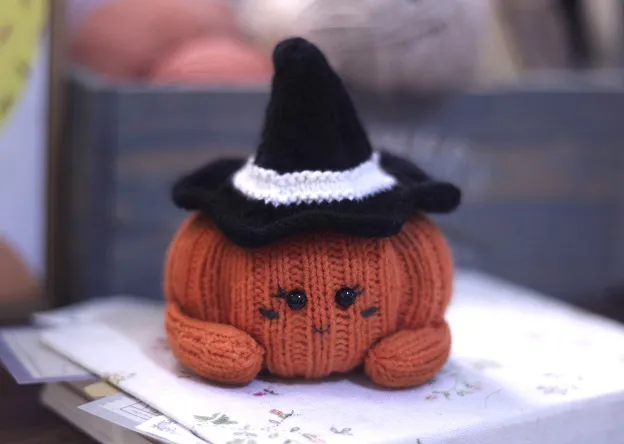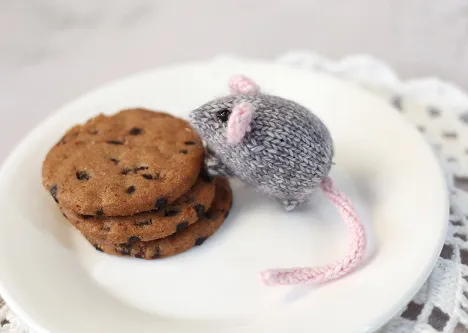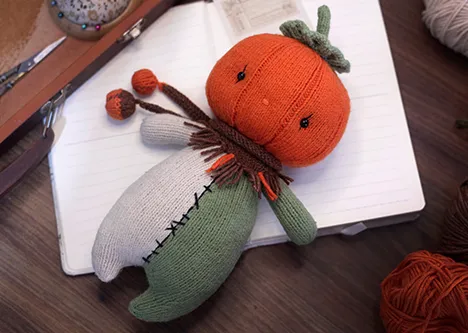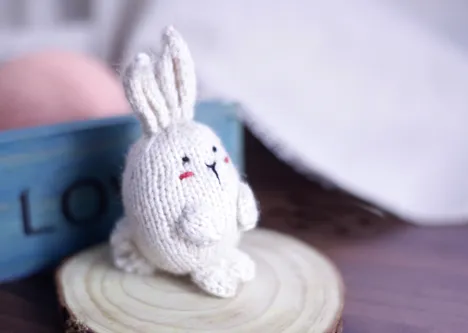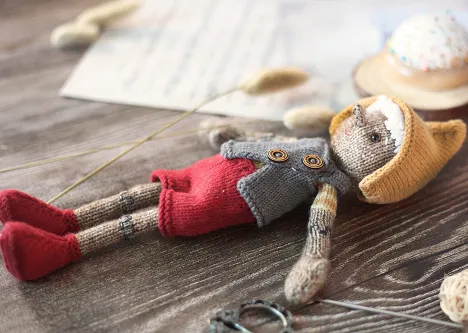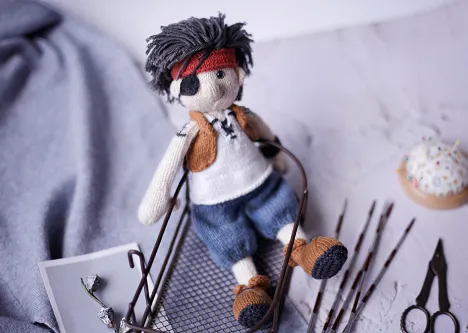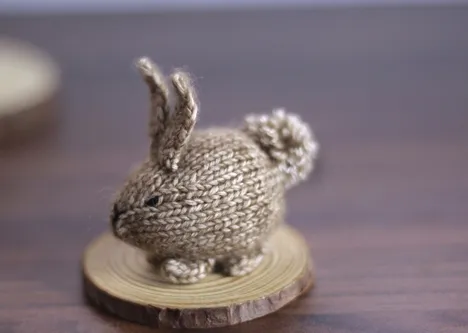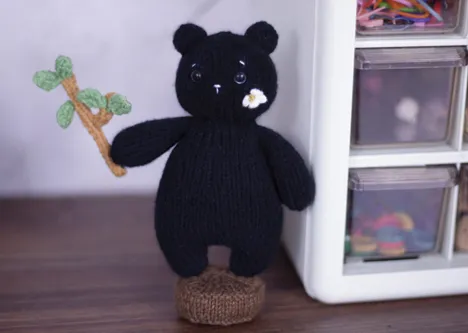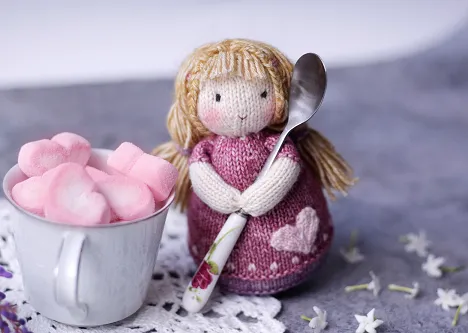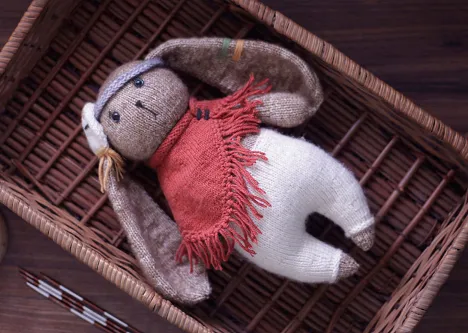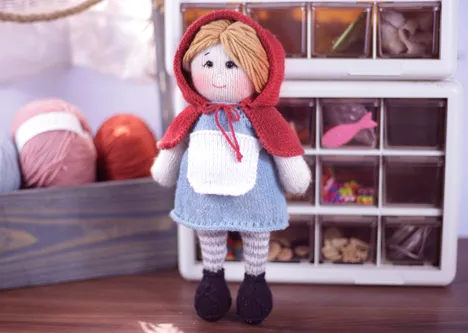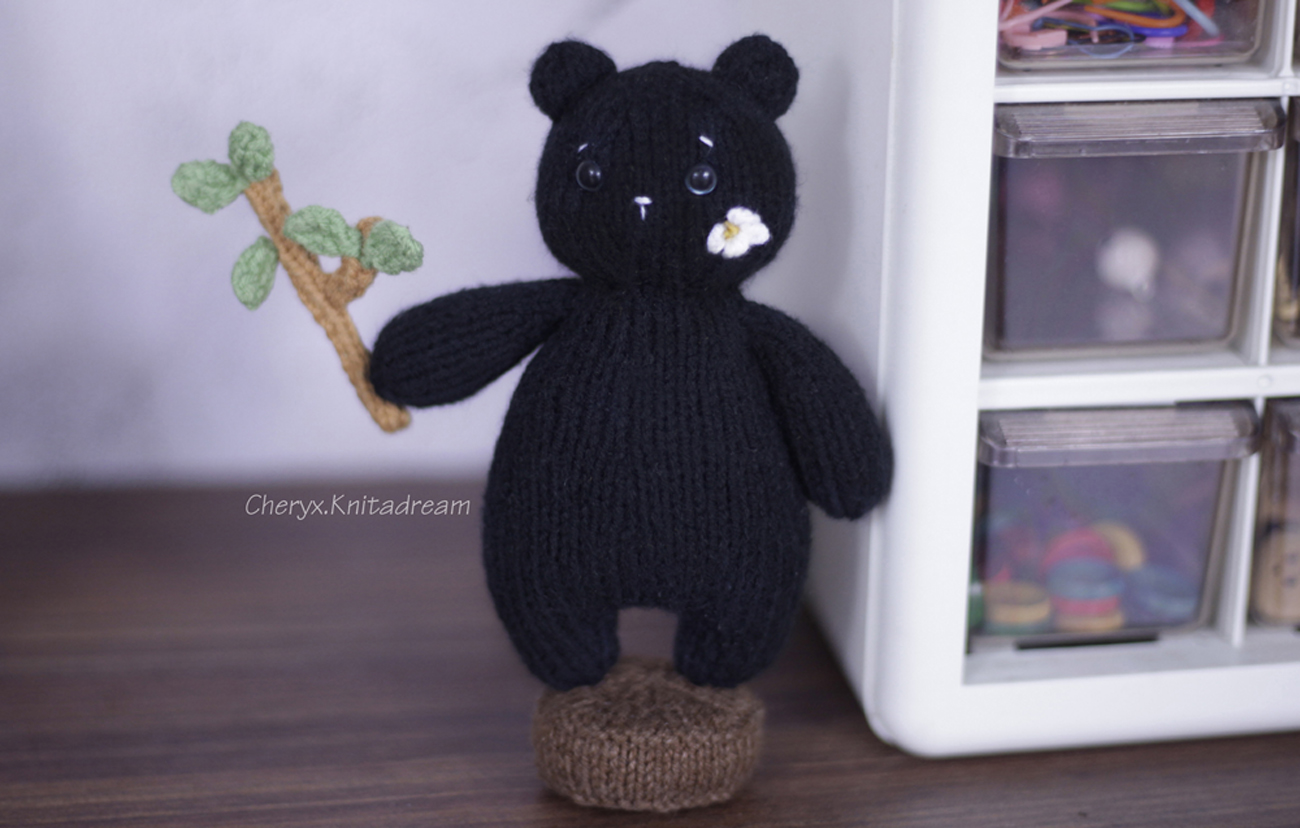
My free knitting pattern! The little bear with the branch and stump. His name is Den!
NEEDLES
A pair of 2.25mm straight knitting needles
MATERIALS
Toy filling (less than 50g)
Tapestry needle
Sewing pins
2 beads - for the eyes (6 mm)
1 Holder needle
Tape measure + Scissors
A piece of wire ( 8cm)
Washable thin cardboard (we’ll cut 2 circle and put it into the stump)
YARN
Less than 10g in each colour:
Susan (Black 21, Green 32, Light brown 26)
Jeans YarnArt (Brown 70, White 01, Yellow 84)
NOTES
Finished size: The finished bear is 13cm
Gauge: 26 sts and 34 rows = 4” [10 cm] in stockinette stitch. Don’t worry too much about tension for this pattern.
Work flat: All pieces are knitted flat (back and forth) on a pair of straight knitting needles.
Casting on: Unless otherwise specified, I prefer to use the long tail cast on for all pieces.
Sewing seams: Use mattress stitch and Whip Stitch to sew the seams.
Safety: If you are making these toys to give to a child, please consider your choice of toy eyes carefully, and ensure you have no loose parts (loose threads, buttons, etc) which can be potential.
ABBREVIATIONS
K: Knit
P: Purl
KFB: (Increase) Knit front and back of stitch
K2tog: (Decrease) Knit two stitches together
KRL: (Increase) With your right needle, come from behind and scoop up the right loop of the “V” stitch just below the one on your left needle. Lift this loop up into your left needle. Knit the loop.
KLL: (Increase) After working a knit stitch, identify the stitch 2 rows below the one on your right needle.With your left needle, come from behind to scoop up the left loop of this stitch. This loop on the left needle is the new stitch. Insert the right needle tip through the back loop and knit.
Stocking Stich (St st): Knit all stitches on right side rows, purl all stitches on wrong side rows.
st(s): Stich(es)
(...sts): The number in round brackets at the end of the instruction indicates the number of stitches after working the row.
[...] : Repeat the sequence between the square brackets by the number indicated.
KNITTING PATTERN
HEAD (Make 1)
Cast on 8 stitches in black (Leaving a long tail for sewing).
Row 1: P8 (8 sts)
Row 2: K1, KFB x 6, K1 (14 sts)
Row 3: P14 (14 sts)
Row 4: K1, [K2, KLL] x 6, K1 (20 sts)
Row 5: P20 (20 sts)
Row 6: K1, [K3, KLL] x 6, K1 (26 sts)
Row 7: P26 (26 sts)
Row 8: K1, [K4, KLL] x 6, K1 (32 sts)
Row 9: P32 (32 sts)
Row 10: K1, [K5, KLL] x 6, K1 (38 sts)
Row 11: P38 (38 sts)
Row 12: K1, [K6, KLL] x 6, K1 (44 sts)
Row 13: P44 (44 sts)
Using 2 ends of different color yarn to marker. (I've used blue yarn to illustrate ). Where 2 ends of the blue yarn come out, we will attach the eyes to the head later.
Row 14: K19, place marker by one end of the blue yarn (Fig. 1), K6, place marker by the other end of the blue yarn (Fig. 2) , K19 (Fig. 3) (44 sts)



Row 15 – Row 21: St st (44 sts)
Row 22: K1, [K5, K2tog] x6, K1 (38 sts)
Row 23: P38 (38 sts)
Row 24: K1, [K4, K2tog] x6, K1 (32 sts)
Row 25: P32 (32 sts)
Row 26: K1, [K3, K2tog] x6, K1 (26 sts)
Row 27: P26 (26 sts)
Row 28: K1, [K2, K2tog] x6, K1 (20 sts)
Row 29: P20 (20 sts)
Using the tapestry needle with the black yarn to thread this yarn through a few stitches at Row 29 as shown in the figure (From A to B), I've used red to illustrate (Fig. 4 - Fig. 5).


Row 30: K1, [K3, KLL] x 6, K1 (26 sts)
Row 31 – Row 35: St st (26 sts)
Row 36: K1, [K4, KLL] x 6, K1 (32 sts)
Row 37 – Row 41: St st (32 sts)
Row 42: K1, [K5, KLL] x 6, K1 (38 sts)
Row 43 – Row 47: St st (38 sts)
Row 48: K1, [K6, KLL] x 6, K1 (44 sts)
Row 49 – Row 61: St st (44 sts)
Row 62: Cast off 2 stitches, K17, cast off 3 stitches (remaining 20 stitches on the left needle to work), K17, (remaining 3 stitches on the left needle to work), cast off 3 stitches (36 sts) (Fig. 6)

We have 36 stitches to knit the legs. Transfer 18 stitches on the left to a holder to knit later. We’ll start knitting 18 stitches on the right first (Fig. 7).
The first leg
Row 1: K1, [K6, K2tog] x2, K1 (16 sts)
Row 2: P16 (16 sts)
Row 3 – Row 4: St st (16 sts)
Row 5: K1, [K5, K2tog] x2, K1 (14 sts)
Row 6: P14 (14 sts)
Row 7: K2tog x7 (7 sts)
Leaving a long tail for sewing, then cut off the yarn. Thread this tail through remaining stitches and pull up tightly.
Then, we’ll knit 18 stitches on holder needle.
Repeat Row 1 – Row 7 (Fig. 8).


EARS (Make 2)
Cast on 12 stitches in black (Leaving a long tail for sewing).
Row 1: K12 (12 sts)
Row 2: P12 (12 sts)
Row 3: K12 (12 sts)
Row 4: P12 (12 sts)
Row 5: K2tog x6
Leaving a long tail for sewing, then cut off the yarn. Thread this tail through remaining stitches and pull up tightly.
ARMS (Make 2)
Cast on 8 stitches in black (Leaving a long tail for sewing).
Row 1: K8 (8 sts)
Row 2: P8 (8 sts)
Row 3: K1, [K3, KLL] x 2, K1 (10 sts)
Row 4 – Row 6: St st (10 sts)
Row 7: K1, [K2, KLL] x 4, K1 (14 sts)
Row 8 – Row 20: St st (14 sts)
Row 21: K2tog x 7 (7 sts)
Leaving a long tail for sewing, then cut off the yarn. Thread this tail through remaining stitches and pull up tightly (Fig. 9) .

STUMP (Make 1)
Cast on 5 stitches in brown.
Row 1: KFB x 5 (10 sts)
Row 2: P10 (10 sts)
Row 3: K1, [K1, KLL] x 8, K1 (18 sts)
Row 4: P18 (18 sts)
Row 5: K1, [K2, KLL] x 8, K1 (26 sts)
Row 6: P26 (26 sts)
Row 7: K1, [K3, KLL] x 8, K1 (34 sts)
Row 8: P34 (34 sts)
Row 9: K1, [K4, KLL] x 8, K1 (42 sts)
Row 10 (Wrong side): K42 (42 sts)
Row 11: K42 (42 sts)
Row 12 – Row 15: St st (42 sts)
Row 16 (Wrong side): K42 (42 sts)
Row 17: K1, [K3, K2tog] x 8, K1 (34 sts)
Row 18: P34 (34 sts)
Row 19: K1, [K2, K2tog] x 8, K1 (26 sts)
Row 20: P26 (26 sts)
Row 21: K1, [K1, K2tog] x 8, K1 (18 sts)
Row 22: P18 (18 sts)
Row 23: K1, K2tog x8, K1 (10 sts)
Leaving a long tail for sewing, then cut off the yarn. Thread this tail through remaining stitches and pull up tightly (Fig. 10) .

LONG BRANCH (Make 1)
Cast on 4 stitches in light brown.
Row 1: K4 (4 sts)
Row 2: P4 (4 sts)
Row 3 – Row 30: St st (4 sts)
Row 31: K2tog x 2 (2 sts)
Leaving a long tail for sewing, then cut off the yarn. Thread this tail through remaining stitches and pull up tightly .
SHORT BRANCH (Make 1)
Cast on 4 stitches in light brown.
Row 1: K4 (4 sts)
Row 2: P4 (4 sts)
Row 3 – Row 8: St st (4 sts)
Row 9: K2tog x 2 (2 sts)
Leaving a long tail for sewing, then cut off the yarn. Thread this tail through remaining stitches and pull up tightly .
LEAVES ( Make 5)
Cast on 2 stitches in green (Leaving a long tail for sewing).
Row 1: KFB x 2 (4 sts)
Row 2: P4 (4 sts)
Row 3 – Row 4: St st (4 sts)
Row 5: K2tog x 2 (2 sts)
Leaving a long tail for sewing, then cut off the yarn. Thread this tail through remaining stitches and pull up tightly.
SEWING & MAKING UP
SEW THE LEGS, HEAD & BODY
We'll use the Mattress Stitch to sew the legs, head & body. You can see this video.
ATTACH THE ARMS TO THE BODY
We will fold the arms of the bear and using the tapestry needle with cast off tail to sew the side edges together. Adding stuffing as you sew, leaving the top of arm unstuffed so it stays floppy.
Sewing the arms to the the body.
TO SHAPE THE NECK & MAKE THE EYE SOCKETS
We'll use the long tails on the neck to shape the neck & make the eye sockets.
ATTACH THE EARS TO THE HEAD
We’ll fold the ears and use the tapestry needle with cast off tail to sew the side edges together. (Using the Whip stitch).Don’t add stuffing.
Then, sewing the ears to the head
EMBROIDER THE NOSE, EYEBROWS & FLOWER
We’ll use the ply of white yarn to embroider nose, eyebrows.
SEW THE STUMP
We’ll measure the diameter of the stump, cut the cardboard into 2 circles (diameter of 2 circles = diameter of the stump).
Putting 2 circles into the stump, adding stuffing between them and continue sewing the side edges.
SEW THE BRANCHES & LEAVES
The branches
We'll curve 2 ends of the wire and taped it. Then putting it into the long branch and sewing the side edges by Whip stitch.
Sewing the side edges of short branch by Whip stitch, don’t add stuffing and don’t put the wire.
Then we’ll attach 2 branches together
Leaves
Using a tapestry needle to tranfer the cast off tail (sewing along the side edge).
Sewing the leaves to the branches.
-------------------------------------------
Welcome Den to your family !

✿ If you love my free patterns,tips and tutorial videos and you would like to support , you can Buy Me A Coffee. I really appreciate your support, it's my motive and I will try to do more. Thank you so much!









